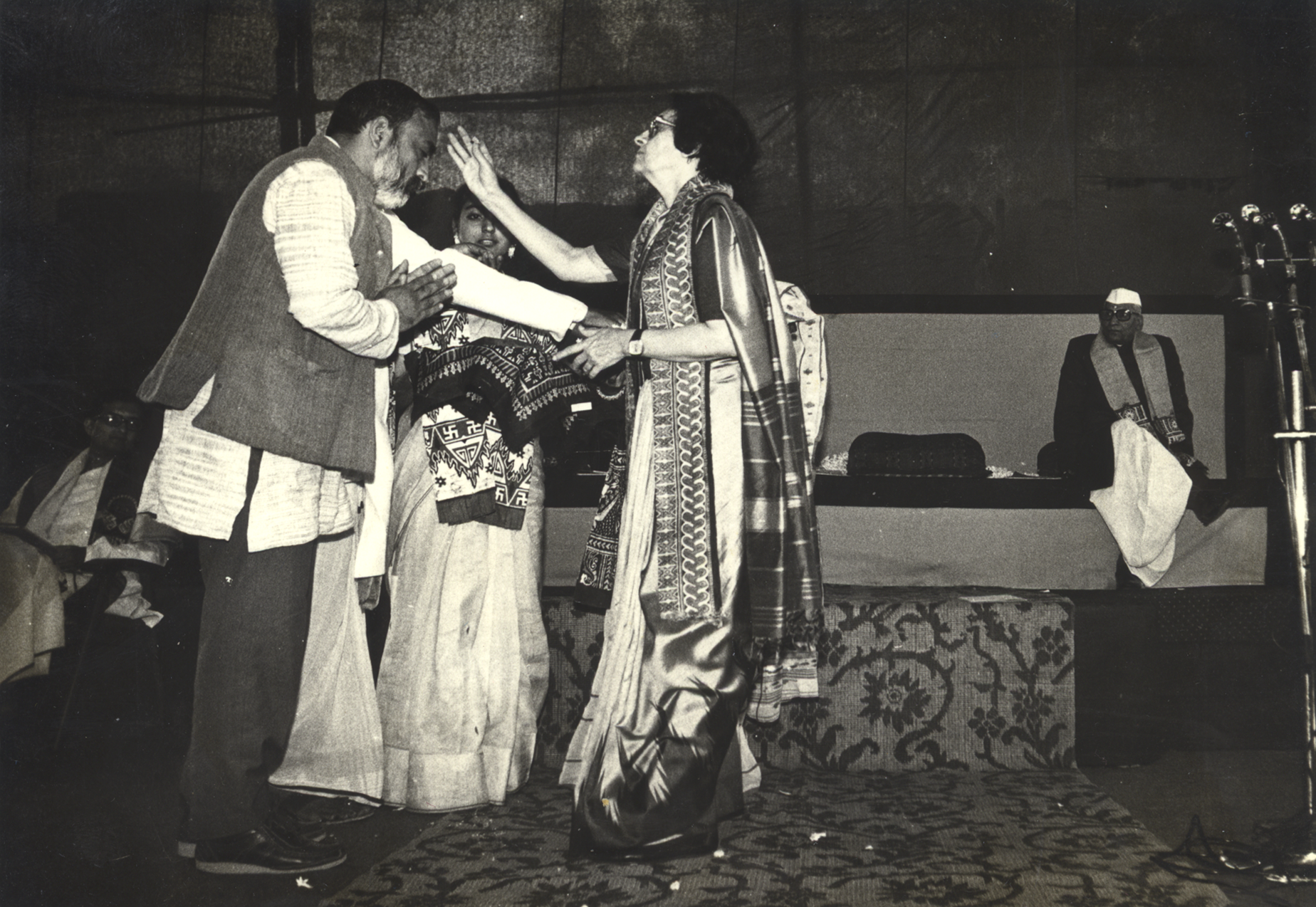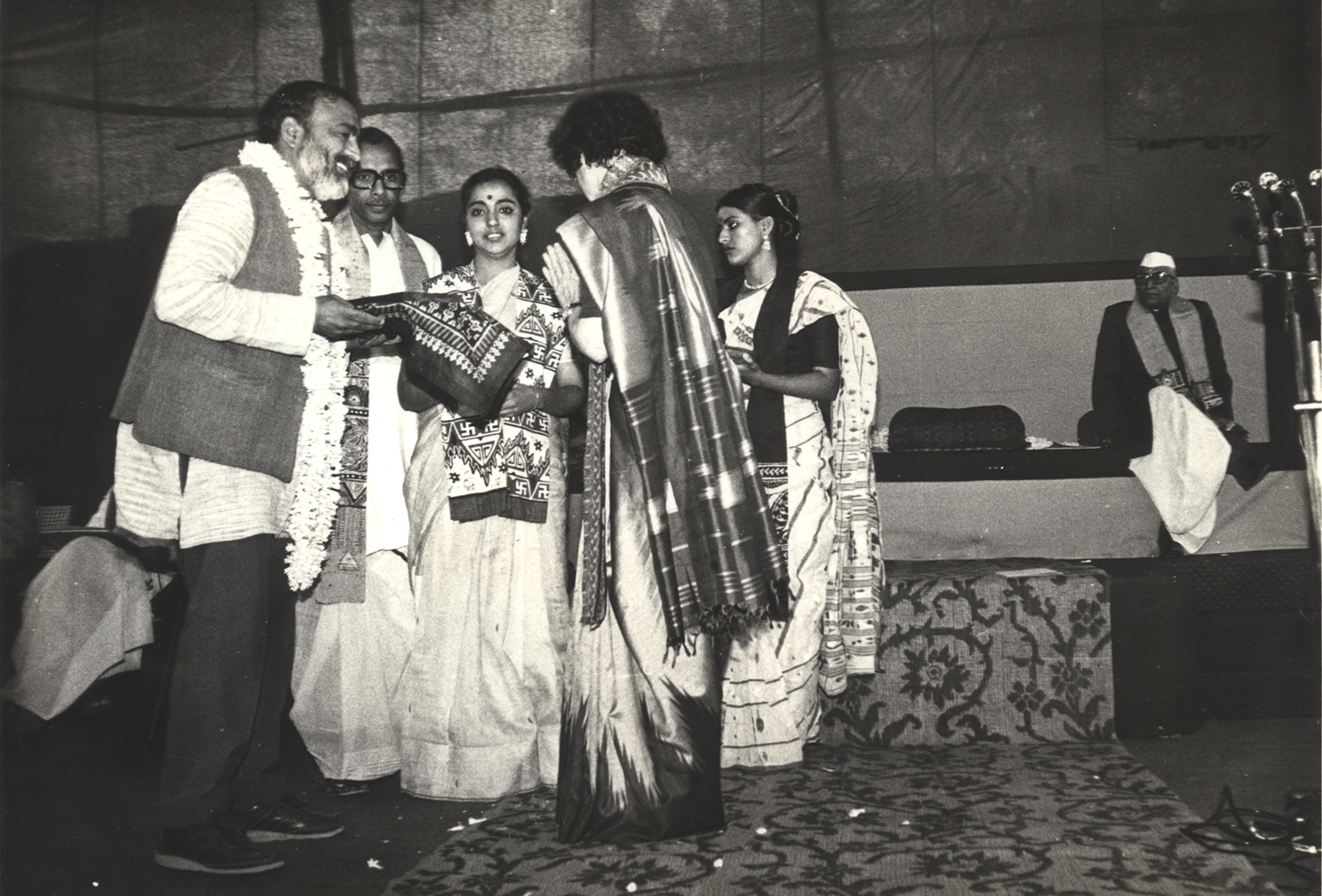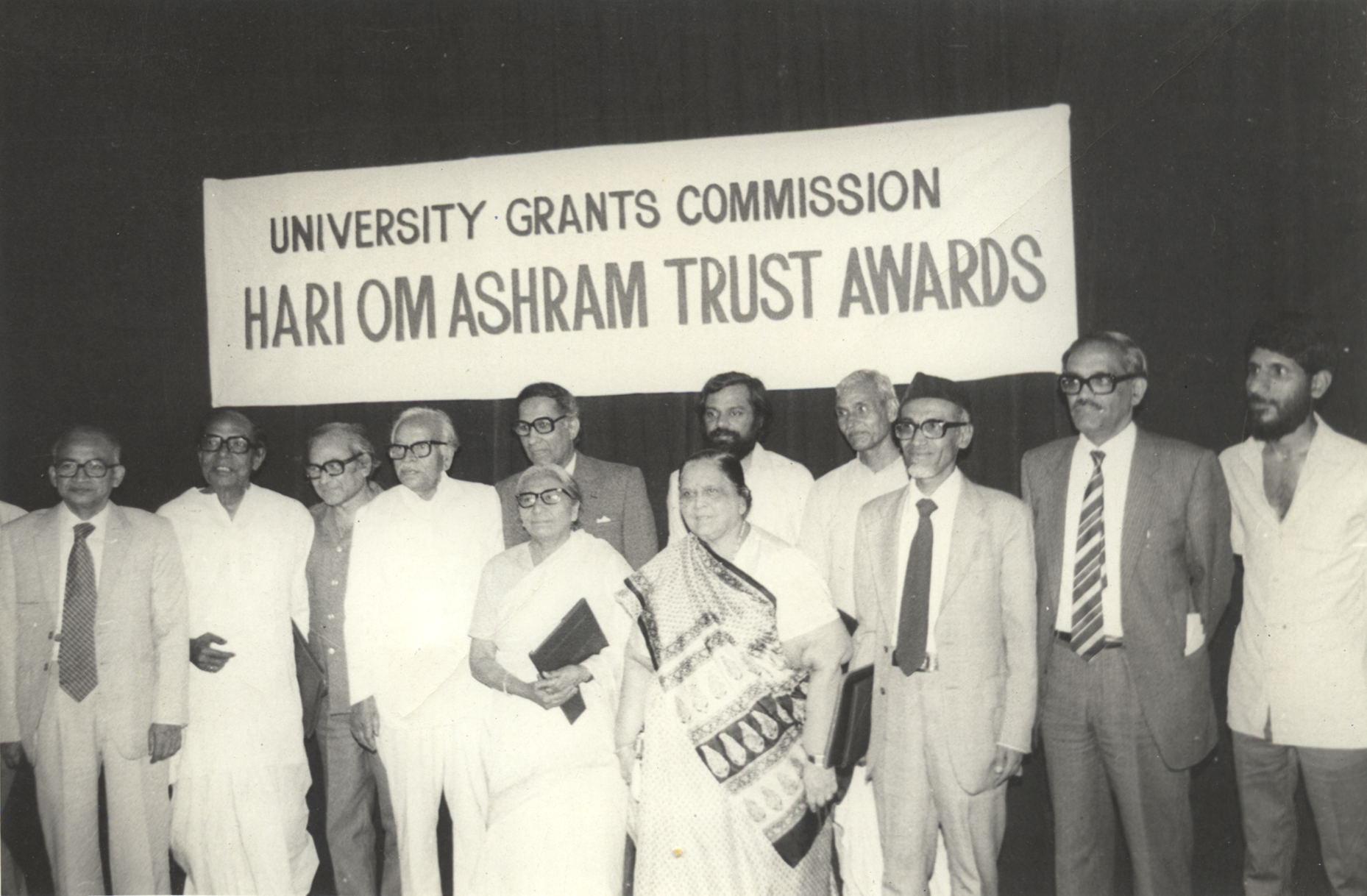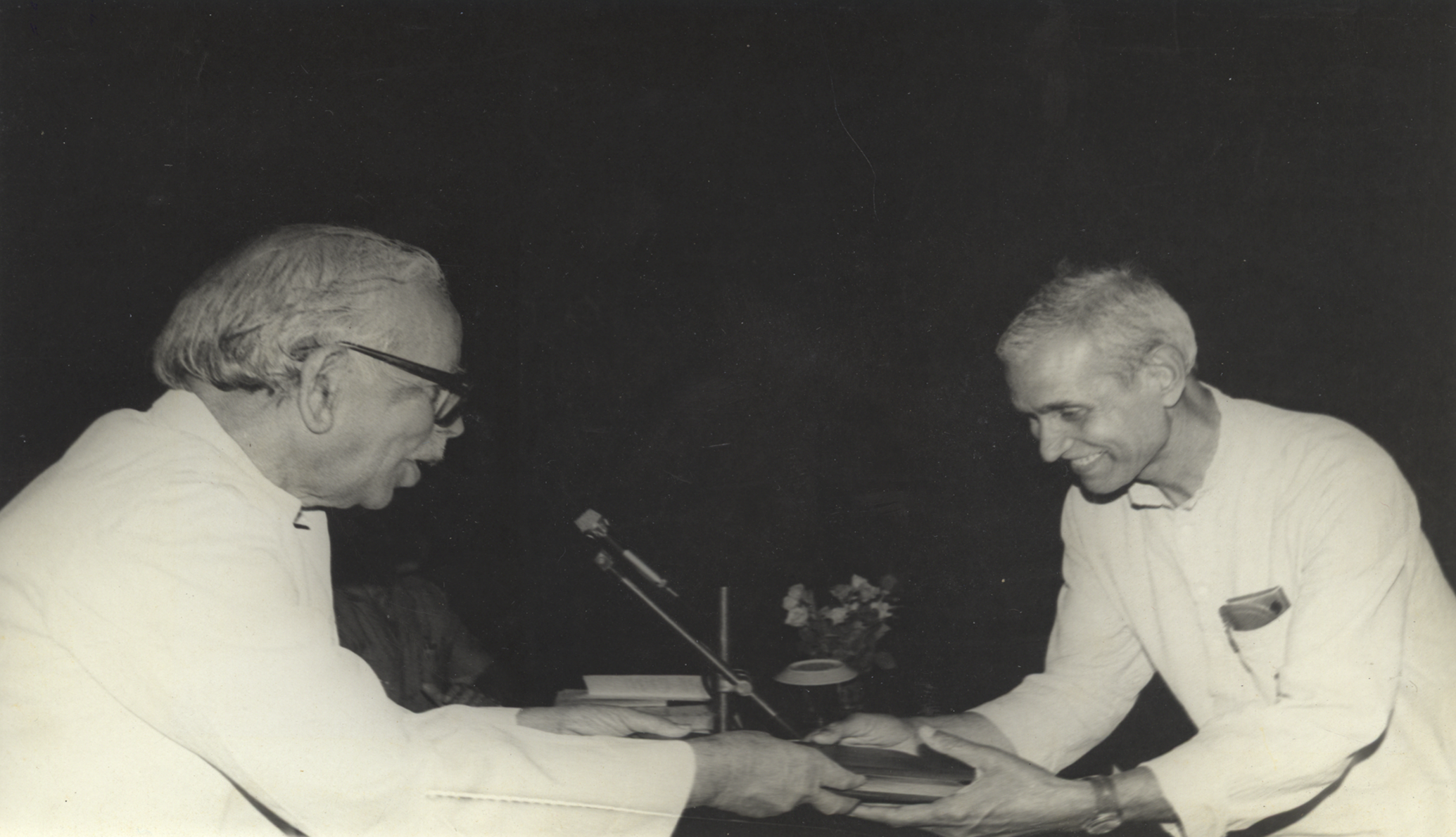History
Phase I (1969-72) : The Emergence of an Idea and Birth of Rural Campus
In the late 1960s, a group gradually took shape in Mumbai, doubting the correctness of the post-independence model of development. Rural development was essentinlly a plan of shifting rural poverty into urban poverty, with increasing inequality and discrimination in society. This understanding became the basis of viewing education as a major tool of social transformation. A series of deliberations, famously termed ‘chai-bhajia’ meetings were held. The Gandhian model of Nai Taleem, aimed at demolishing the dichotomy between productive work, on the one hand, and knowledge, values and skills on the other, became the central inspiration of the group. The success of AMUL as a co-operative endeavour of the farmers, was yet another important source of inspiration. Hence, the decision to set up a rural campus, based on agriculture (including animal husbandry) in combination with cottage industries, built on a co-operative mode, was taken. The Nai Taleem experiment will be at the centre of rural development programme. Thus the search in rural Gujarat and Maharashtra for a rural campus began in all earnestness. It is a different story how the search instead ended in Hoshangabad District, Madhya Pradesh.
To Read More on Phase-1 Click Here
Phase II (1972-82): Engagement with Reality — Multi-Dimensional Response
Even before the work on the Palia Pipariya rural campus in Foshangabad Distt. took off the ground, the sustained questioning by Sudarshan Kapoor of Friends Rural Centre, Rasulia (1971-72) began to influence our original thoughts. This is the story of how the idea of setting up an isolated Nai Taleem experimental school was being questioned on the ground of it having, at best, only a marginal impact on the prevailing education system, apart from the possibility of dying its ‘slow death’ as has been the case with thousands of such attempts in the recent past. At the same time, the questioning emphasized the priority of intervening in the established school system, being essentially a government school system at that stage of pre- globalisation Indian economy. The outcome was the plan to intervene in 16 Government middle schools of Hoshangabad and Bankhedi Blocks, later to be termed the Hoshangabad Science Teaching Programme (HSTP). The work on the rural campus also started around the same time. The form and content of the rural campus along with the Nai Taleem experimental school was further influenced by the addition of a significant minor irrigation programme based on the appropriate technology of Ring Wells as well as a cattle breeding-cum-animal husbandry programme. That these programmes also enriched the Nai Taleem idea, is a different matter. Soon, a set of agricultural innovations aimed at engaging with cultivation in sandy soil began to occupy the central stage due to the physical and social reality of the campus. KB’s attempt to set up a cottage industry — production of electrical chokes for tubelights and training programme for repair of electrical motors of pump sets — is yet another evidence of how the Nai Taleem idea was being transformed into a multi- dimensional rural development programme.
In terms of phasing, HSTP preceded the Nat Taleem experiment (the first teacher- training was held in May 1972) and rapidly overtook all other priorities. By 1973, the Nai Taleem experiment also took shape in this vibrant milieu of rural development, on the one hand, and HSTP, on the other. This experiment with a handful of school drop-outs from poor peasant families, though lasting only for 5-6 years, was unexpectedly a rich experience that unfolded a range of radical pedagogic possibilities that seemed to transcend even Gandhi’s own ideas, at least as far as practiced by his followers since early 1940s. It was through this experiment that we could discover Freirian pedagogy of social transformation well before it became known in the Indian educational ethos. The formal introduction to Freire’s ‘Pedagogy of the Oppressed’ by Datta Savle, the radical pedagogue of the tribal movement in Maharashtra awakened us to a new educational discourse in the post-emergency period (from 1977 onwards).
By the time, the political emergency ended, the 6-year old HSTP had succeeded in establishing the basic validity of both the radical pedagogy of science ediication as well as of the crucial role of pro-people intervention in government school system. The time was ripe to convert the pilot-scale lntervention into an institutionalized intervention calling for major structural changes w’ithin the school education system. A joint FIIC, Rasulia and KB proposal to the state government set the ball rolling. In 1978, HSTP expanded from a 16-school intervention to all the 280 odd middle schools of Hoshangabad District, touching all structures and processes of school education — from teacher education, school time table and textbook writing to evaluation and assessment. By 1981, with FRC, Rasulia having withdrawn from HSTP, KB was leading the programme from village schools and teachers to the corridors of Government Colleges in M.P., Delhi University, IITs and NCERT/ UGC/ Ministry of Education— something entirely unanticipated in the original scheme of things.
Public health was then emerging as a national issue. KB, too, set up a mini- experiment called ‘Zaroori Dawai Suvidha’ involving the oppressed classes and castes in the village, particularly women. By early 1980s, investigations into the people’s perceptions of fertility and child birth became new concerns in KB’s consciousness. Thus KB way initiated, though reluctantly, into the feminist discourse then beglnning to capture the attention of the progressive sections of society, at least among metropolitan middle classes.
HSTP also drew KB into People’s Science Movement led by Kerala Shastra Sahitya Parishad (KSSP), opening up new possibilities of people’s education.
KB had by then become virtually a ‘pilgrimage centre’ of the progressive lntelligentsia from all over the country — a role for which we were most ill- prepared ideologically as well as strategically. Yet, the KB ambience was then pregnant with optimism and faith that “education in this wider sense can lead to social transformation”. Nothing could then diffuse the enthusiasm of the young highly educated ever-expanding team then gelling around KB.
KB also decided to support the then nation-wide endeavour to resist assault on people’s democratic rights and civil liberties. Beginning in 1980, we played a key role in building up the state PUCL and working with PUDR, Delhi in carrying out investigations of violations of the Constitutional rights of the masses, not just in M.P. but beyond in neighbouring states like Maharashtra and Andhra Pradesh as well.
Grounded in KB’s own rich campus-based library and documentation centre, a series of mobile libraries started functioning in the surrounding villages. Shaheed Bhagat Singh Pustakalaya Evam Sanskritik Kendra, supported by the youth inspired by the ideology of Lohia and Kishen Patnaik, was set up in Papiaria town. This Kendra undertook intensive work with both village and kasbai children outside the schools which included a newspaper edited by the children themselves. The Kendra’s progressive lecture series organized in Piparia became the fertile ground of progressive ideas in a knshni environment, otherwise dominated by the big peasantry and grain traders.
A study group began to function by 1982 to study ‘The Capital’ by Marx.
KB was no more a naive romantic experiment in rural development, Nai Taleem, HSTP or otherwise!
To Read More on Phase-2 Click Here
Phase III (1982-88): Bold New ‘Adventures’ but Without Organisational or Ideological Preparedness
- Reproductive Awareness and Women’s Health; Involvement in women’s movement across the country (1980s onwards).
- Formation of EKLAVYA and Expansion of HSTP beyond Hoshangabad District (1982 onwards).
- Involvement in National Teachers’ Commission. (1983-84).
- Bhopal Disaster — Pro-active support to the Victims’ Struggle against the Collusion of Indian State and Union Carbide (1984-87). (The Bhopal struggle constitutes the first major engagemCnt of KB whose focus v•as outside the campus, raising questions regarding the re1e›•ance and limitations of carrying the complex responsibility of campus maintenance and management of the contingent development progiainmes.)
- Water Testing Programme with Higher Secondary Students of Chhindwara Government School (1986-87).
- Children’s Pedagogic Programmes, with emphasis on language development (1987 onwards).
- Engaging with Narmada Dam Issue (1988 onwards) and extending support to the first public protest at Harsud.
By this time, the NGO culture spreading all over the country started being reflected in KB too, leading to incremental distortion and attrition of KB’s voluntary spirit, along with a dangerous trend of depoliticisation. The KB group was quite ill-prepared both ideologically and organizationally to deal with this early neoliberal impact during the late 1980s. Consequently, disarray, ad-hocism and adventurism in work styles and priorities led to attrition of the overall sense of purpose, though somewhat restrained by KB’s history of rich experience.
To Read More on Phase-3 Click here
Phase IV (1988-92): Towards Winding Up of the Rural Campus
A major debate ensued from 1988 onwards around the following questions:
- What are the limits of institutional framework (particularly its campus-based form) and its organizational implications in catalyzing social transformation?
- What are the limits of role model (i.e KB’s various programmes) as a tool of social transformation?
- What are the limits of building public pressure, both from within (through Govt. Committees like the Teachers’ Commission) and without (HSTP; EKLAVYA)?
- Isn’t KB becoming a NGO and losing its missionary zeal by becoming trapped in internal squabbles and petty issues?
- Isn’t KB likely to become a Mathh (WS) like institution, just like various Gandhian AShrams, Religious Centres or Ramakrishan Missions, if we continue like this?
After in-depth prolonged debates with KB staff and well-wishers and examination of various creative alternatives, the EC finally decided in 1989-90 to wind up the 150-acre rural campus and hand over the land along with all the immoveable assets (amounting to more than 30 Lacs) to the state government.
This decision was implemented by 1991-92.
To Read More on Phase-4 Click Here
Phase V (1992-2003): Hibernation and Introspection
The EC decided to hibernate and introspect in the wake of winding up KB’s rural campus, before undertaking any further programme.
A decision to document KB’s history was taken but, unfortunately never carried out.
The EC continued to hold its meetings regularly as per law but no programme was undertaken during this hibernation period except for extending financial support to some selected organisations periodically out of its left over funds after winding up the rural campus.
To Read More on Phase-5 Click Here
Phase VI (2003-15): Re-defining KB’s Role in Social Transformation
Beginning in 2003-04, the EC undertook a detailed analysis of the post- globalisation education policies and evaluation of neoliberal impact on Indian polity, in general, and education, in particular. It was understood that the rising educational crisis as a result of neoliberal economic order called for a major people’s movement to resist its attack. In 2006-07, a decision was taken by EC to redefine KB’s role such that its institutional structure can provide critical support to building a people’s movement in education with a view to redeem India’s education as well as sovereignty from neoliberal assault and, in the process, also reconstruct the education system for future generations as per India’s Constitution. This must be recorded as an unprecedented decision for a voluntary organisation in India’s history of the upsurge of voluntary movement since early 20th century.
Also, it was decided to involve younger people in KB’s work and EC itself in order to broaden the scope of KB’s programmes. Accordingly, in 2008-09, a rigorous exercise was undo:rtaken to revise KB’s Memorandum of Association in order to attract younger people to associate with KB as per their particular interest areas.
Since 2007, KB has provided critical support to building a people’s movement in education against the neoliberal policies. From June 2009 onwards, this support has been provided to the All India Forum for Right to Education (AIFRTE) in particular through provision of critical fellowships and stipends; partial financial support to training programmes, workshops, conferences, documentation and publication; and strengthening the general process of raising people’s consciousness regarding how neoliberalism is distorting and destroying the education system, thereby building an alternative education system based upon the Constitution through a people’s movement.
In the same vein, since 2011-12, KB has provided subtle but critical support to the task of building people’s consciousness against the privatization of water, through PPP or otherwise, in Madhya Pradesh due to the neoliberal water policy of the centre.
To Read More on Phase-6 Click Here
Awards to Kishore Bharati:
Awards to KB (Rathindra Award)


Awards to Kishore Bharati (UGC Award)


